Common Physical Layer
Common Physical Layer is a package that contains…
The Common Physical Layer (CPL) contains abstractions that allow for better management across an ecosystem inside the
data center, in the cloud, and on the edge devices. These abstractions give the ability to manage a highly variable
hardware configurations by describing the common operating and taxonomy of the devices. This architectural layer has the
the goal of addressing the following characteristics:
- Common Taxonomy
- Portability and Interoperability
- Security and Root of Trust
- Common Management Control Plane
- Performance Optimization
- Stability and Reliability
- Flexibility and Agility
The CPL sits at the bottom of the Architectural stack and is the foundation for all of the other layers of the
architecture. It relies on Security and Identifying aspects to
establish the hardware root of trust, identity, and data encryption at the lowest levels.
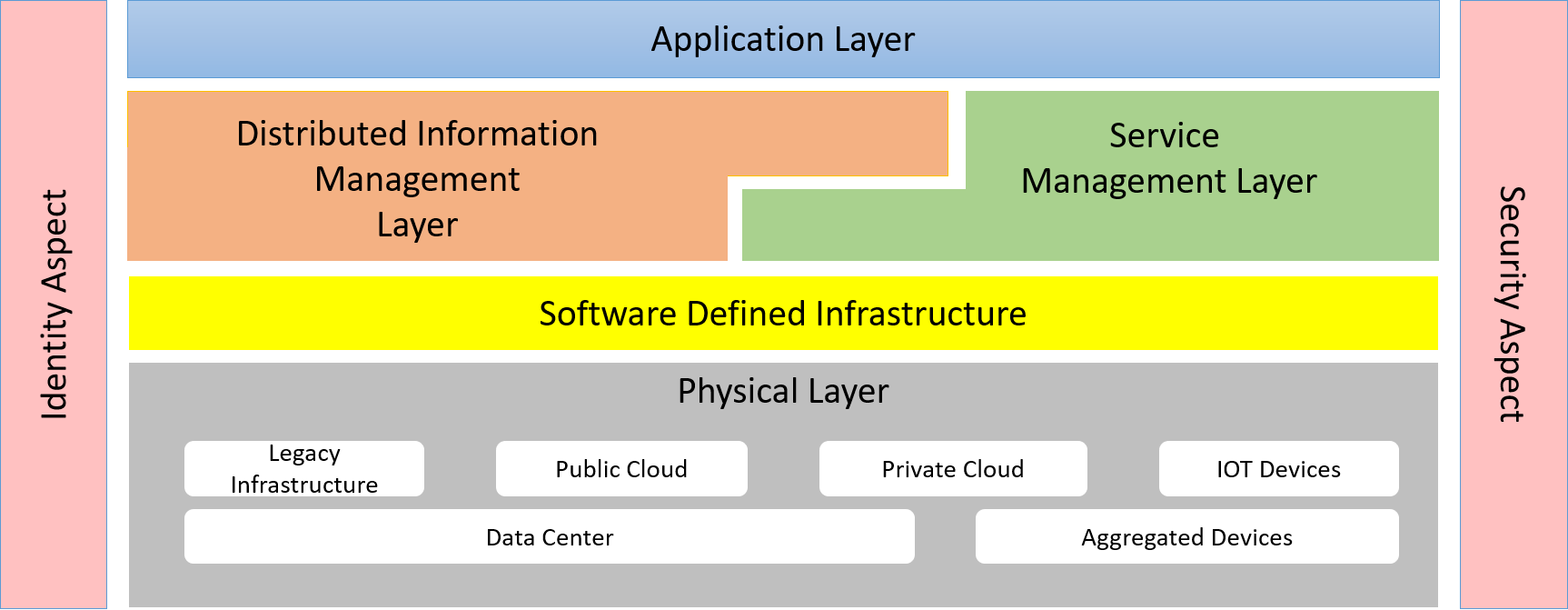
The CPL establishes a taxonomy of generalized hardware devices. This makes it easier to create standard services
and operating models for the devices. This includes devices in Public Clouds, Private Clouds, Legacy Infrastructure, and
Edge Devices. These devices have standard hardware: compute, storage, network, and accelerators. Understanding that each device can have a unique set of capabilities delivered from the device’s special hardware is key to establishing a common management control plane.
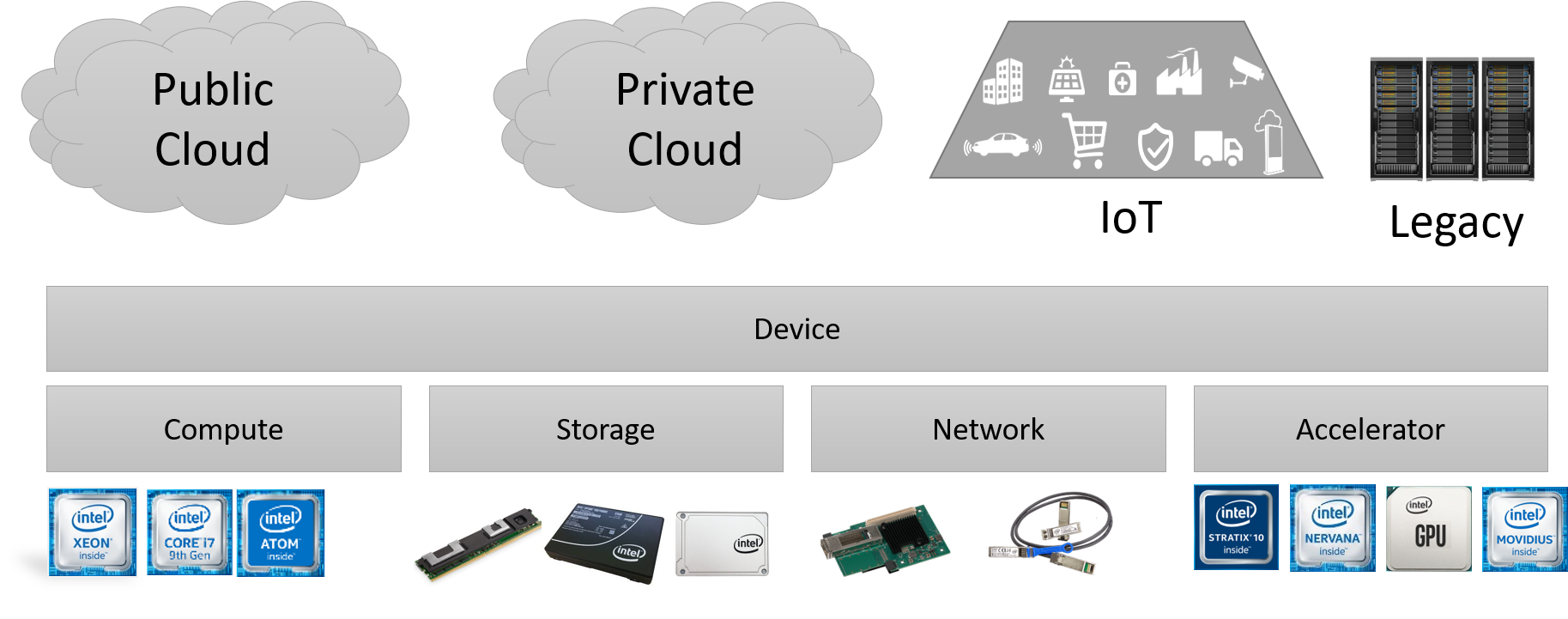
The critical element in this layer is the Device. It is represented by a model that contains
several hardware elements. The device has a profile that shows the device’s capabilities device and hardware, as well as the current capacity of
the device. The device is has a simple interface for control and telemetry up to
the software-defined infrastructure layer - SDI so applications
and services can be deployed to the device and its (hardware)[class-hardware].
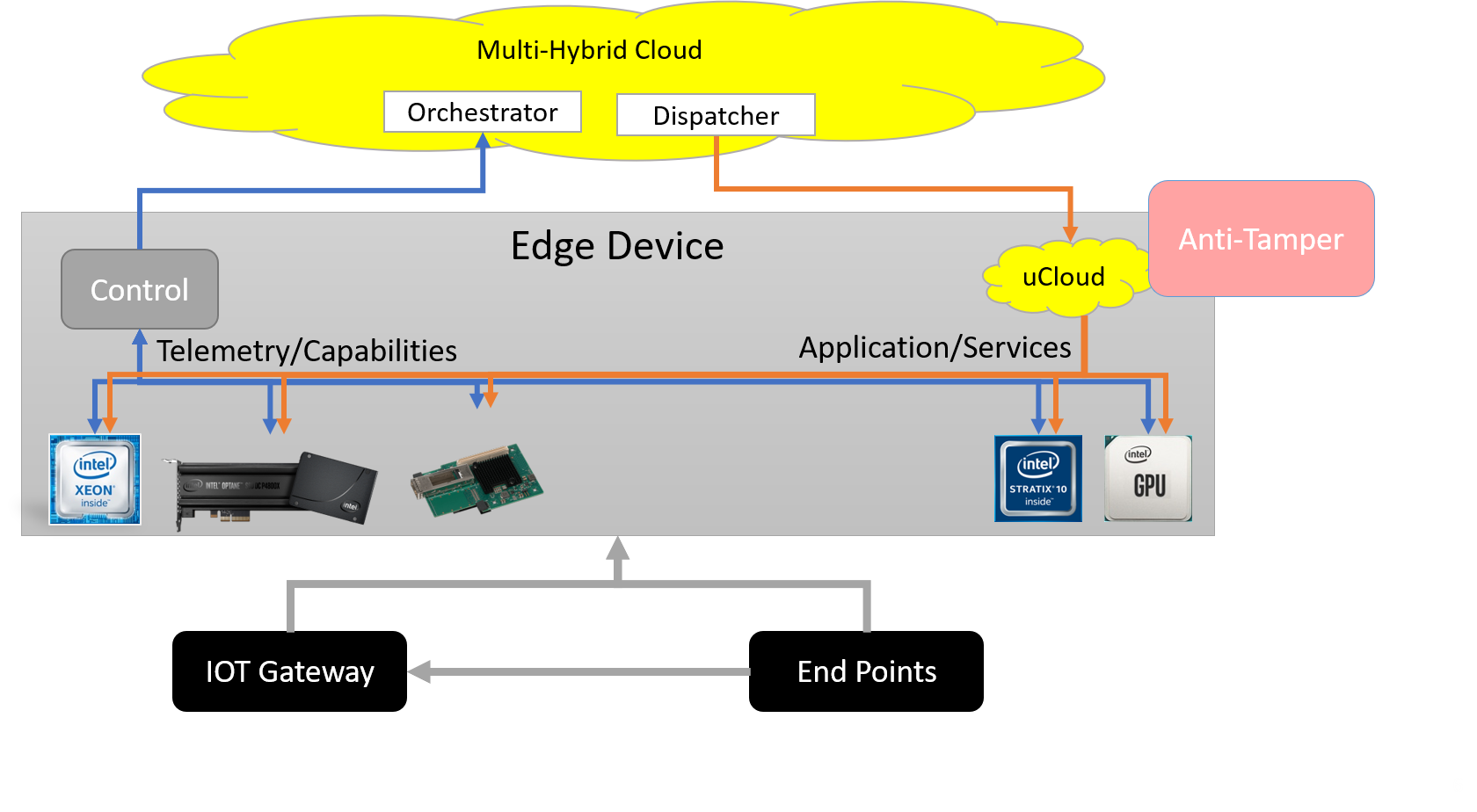
With the explosion of IoT devices, the complexity of managing the devices in conjunction with devices in the
cloud and the data center. Addressing a large number of devices can become overwhelming for
IT operations engineer as well as any automated IT management system. For this reason, the architect has
created an element called the Aggregated Device. That allows for grouping devices into
collections to be managed and controlled as a group instead of as individual
devices. Aggregated devices can contain devices or
other aggregated devices, giving the ability to have an infinite number of layers in the hierarchy of devices.
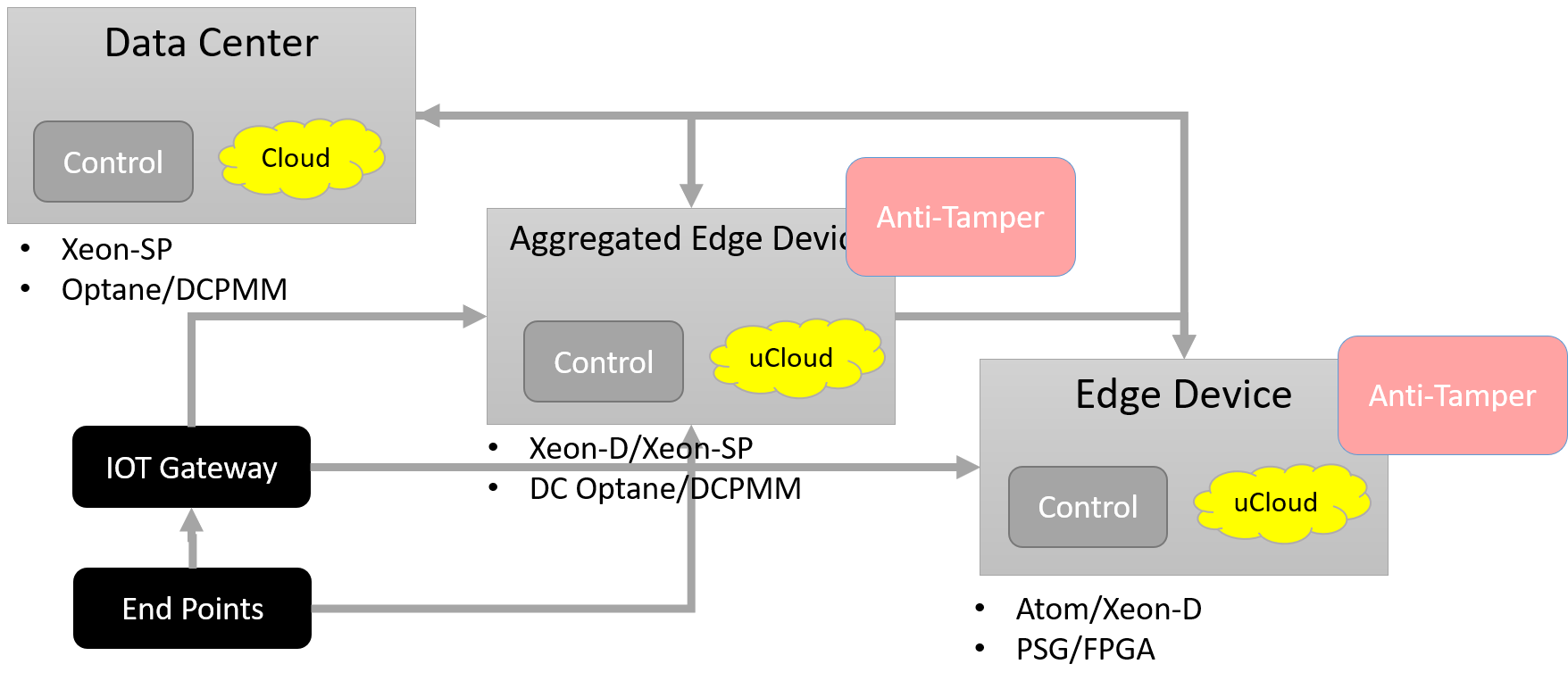
In this example, a topology of devices has been established to give the IT operations engineer
the ability to manage all of the devices connected to a data center. In “Data Center 1”
there are 4 Edge Devices; Data Center 2 has 4 Edge Devices, and Data Center 3 has an Aggregated Edge Device and a normal
Device. Aggregation of devices can happen along with geographic, device capabilities, security profiles, etc… The key is
that the topology is established to help with the physical management of the devices.
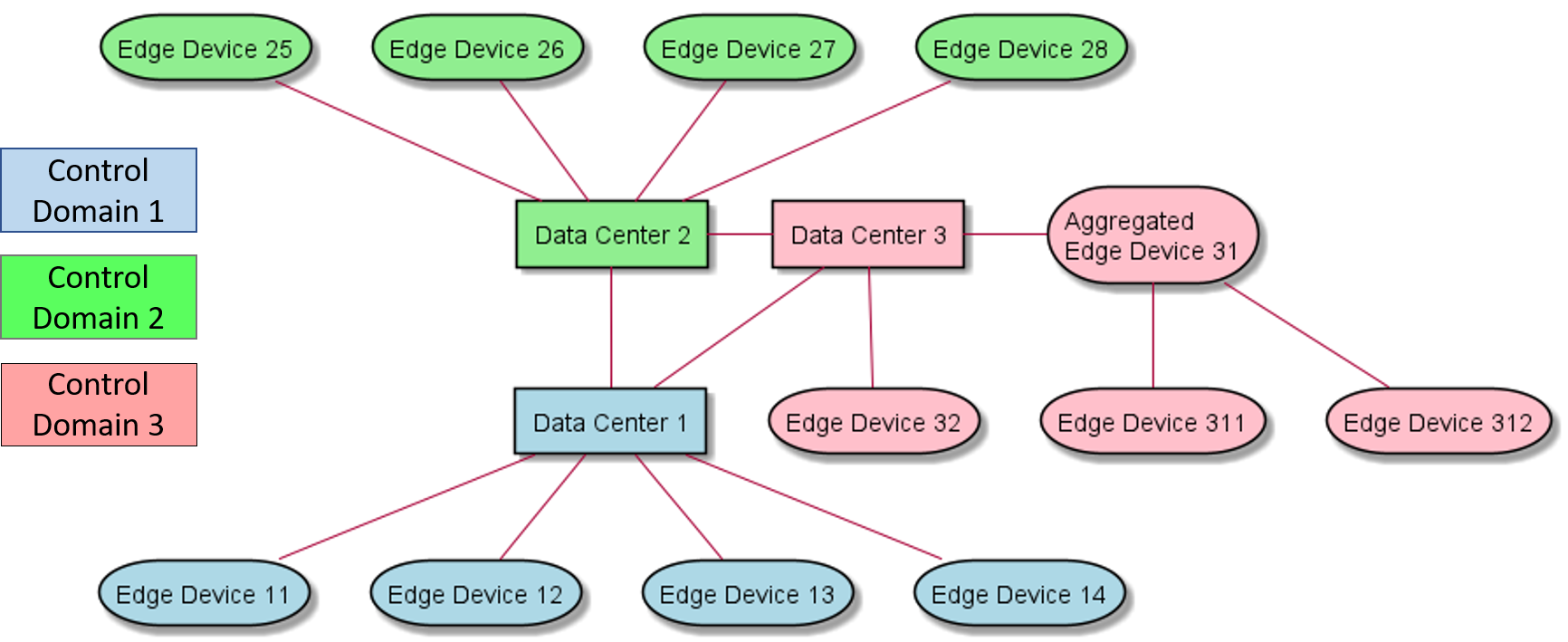
Many times organizations combine the physical management and the logical management of devices. Combining the
Cloud topology and the Control Topology together. This architecture separates the two topologies giving the flexibility
to establish clouds that span multiple physical domains. Including setting a cloud that spans resources in data
centers, public clouds, and edge devices. Providing the ability to schedule and manage applications and services across
traditional boundaries.
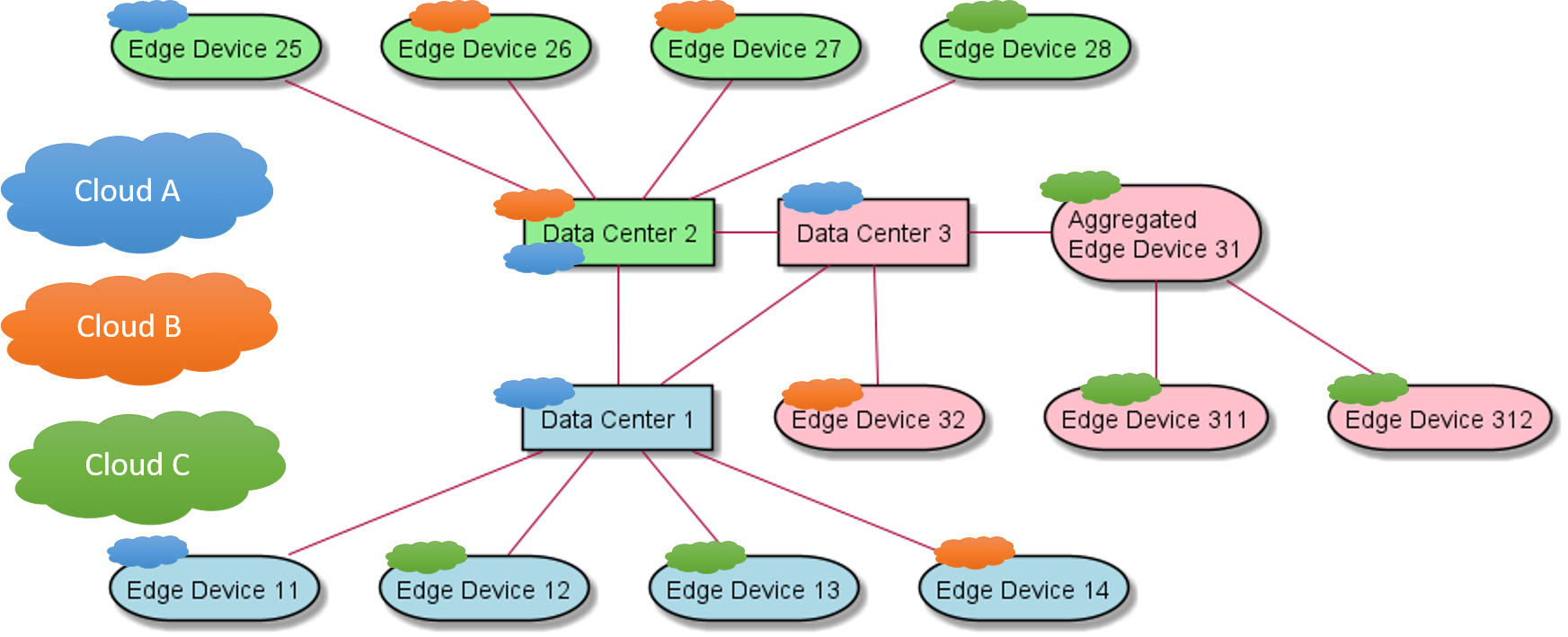
This example shows three clouds that share devices and span the control topology established for
optimized IT operations. This flexibility allows clouds (logical devices) to adapt to changing environments. Theses
changes can include everything from cyber threats, physical disasters, partial connectivity of edge devices, or even
someone tripping over a network connection in the data center.
Physical Asset Management
In the realm of physical asset management, understanding the intrinsic value and functionality of assets is paramount. Whether it’s machinery, infrastructure, or equipment, assets form the backbone of any operational setup. Here’s a detailed exploration of the key concepts and considerations in this domain:
Importance of Assets
Assets are the lifeblood of an organization, representing tangible resources critical for its operations. Identifying the most crucial assets is fundamental, as they underpin productivity, efficiency, and overall success. Moreover, integrating people into the infrastructure involves recognizing how individuals interact with these assets. This integration ensures that human resources are optimally utilized and aligned with asset management strategies.
Digitization of Assets
Digitizing the enterprise involves transitioning from traditional, physical processes to digital solutions. This transformation enables seamless integration of physical assets into digital frameworks, facilitating better monitoring, management, and analysis. By bridging the gap between the physical and digital worlds, organizations can unlock new opportunities for efficiency and innovation.
Characteristics of Assets
-
Sensors: Assets are equipped with sensors that capture real-world data. These sensors convert physical phenomena into analog signals, which are subsequently digitized for processing and analysis.
-
Communication Pathway: Establishing a communication pathway is crucial for transmitting data from sensors to digital systems. Whether through wired or wireless connections, this pathway ensures that asset data can be accessed and utilized effectively.
-
Control of the Physical World: Some assets manipulate the physical world through mechanisms that change position, temperature, electrical current, magnetism, or any other physical characteristic. These assets play a vital role in various industries and processes.
Types of Assets
-
No Sensors and No Communication Pathway: Some assets, like railway switches or compressors, may lack built-in sensors or communication capabilities. In such cases, adding a communication gateway and appropriate sensors is necessary to enable data collection and connectivity.
-
Sensors with No Communication Pathway: Assets may have internal sensors that gather data but lack external connectivity. To leverage this data for analysis and decision-making, establishing a communication pathway becomes essential.
-
Sensor with Communication Pathway: Ideally, assets should be equipped with both sensors and a communication pathway, allowing real-time data transmission to digital systems for analysis and action.
PLC (Programmable Logic Controller)
PLCs serve as the bridge between physical assets and digital devices. These controllers facilitate communication, data exchange, and control functions, enabling seamless integration of assets into digital networks.
Use Cases
-
Monitoring: Assets can be used to monitor physical processes, conditions, and performance metrics in real-time.
-
Control: They can also exert control over physical processes, enabling automation and optimization of operations.
-
Connectivity: Establishing connectivity between physical assets and digital devices enables data exchange, remote monitoring, and control.
-
Management: Efficient management of physical assets involves tasks such as maintenance, repair, and lifecycle planning.
-
Security: Securing both the physical assets themselves and the data they generate is critical to prevent unauthorized access, tampering, or data breaches.
By leveraging the capabilities of physical assets and integrating them into digital ecosystems, organizations can enhance operational efficiency, improve decision-making, and unlock new opportunities for innovation and growth.
Use Cases
The following are the use cases of the Common Physical Layer subsystem. Each use case has primary and secondary scenarios that are elaborated in the use case descriptions.
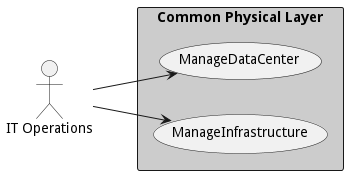
Users
The following are the actors of the Common Physical Layer subsystem. This can include people, other subsystems inside the solution and even external subsystems.
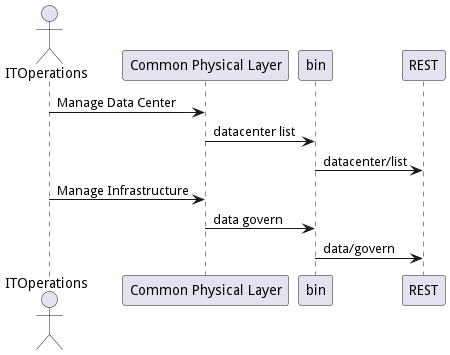
Interface
The subsystem has a REST, CLI, WebSocket, and Web interface. Use Cases and Scenarios can use any or all of the interfaces to perform the work that needs to be completed. The following diagram shows how users interact with the system.
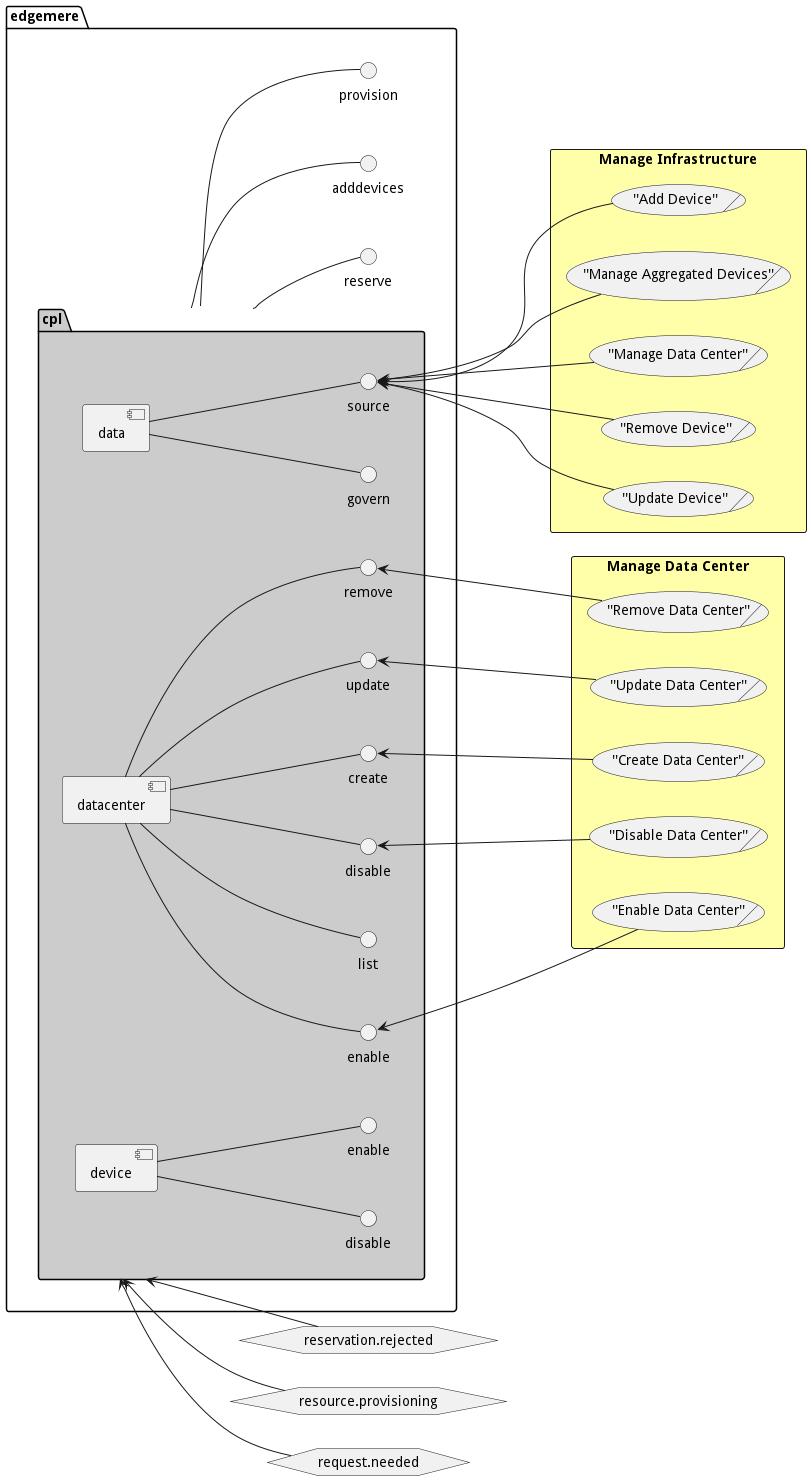
- edgemere cpl adddevices
- edgemere cpl provision
- edgemere cpl reserve
- edgemere cpl data govern
- edgemere cpl data source
- edgemere cpl datacenter create
- edgemere cpl datacenter disable
- edgemere cpl datacenter enable
- edgemere cpl datacenter list
- edgemere cpl datacenter remove
- edgemere cpl datacenter update
- edgemere cpl device disable
- edgemere cpl device enable
Logical Artifacts
The Data Model for the Common Physical Layer subsystem shows how the different objects and classes of object interact and their structure.

Sub Packages
The Common Physical Layer subsystem has sub packages as well. These subsystems are logical components to better organize the architecture and make it easier to analyze, understand, design, and implement.
- Cyber
- Device Agent
- Device Manager
- PhysicalWorld
- Telemetry Aggregator
- Telemetry Consumer
- Telemetry Producer
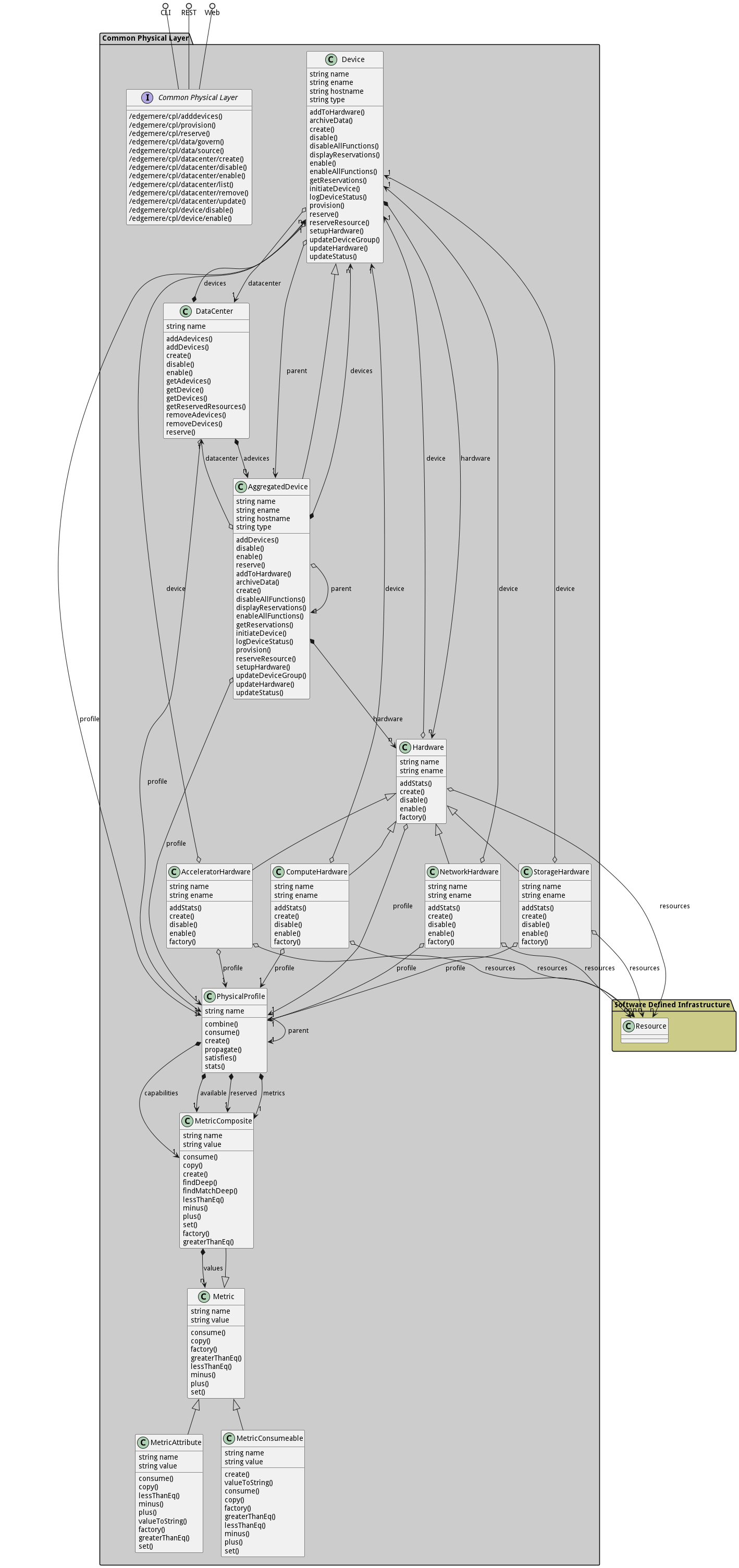
Classes
The following are the classes in the data model of the Common Physical Layer subsystem.
- AcceleratorHardware
- AggregatedDevice
- ComputeHardware
- DataCenter
- Device
- Hardware
- Metric
- MetricAttribute
- MetricComposite
- MetricConsumeable
- NetworkHardware
- PhysicalProfile
- StorageHardware
Deployment Architecture
This subsystem is deployed using micro-services as shown in the diagram below. The ‘micro’ module is used to implement the micro-services in the system. The subsystem also has an CLI, REST and Web Interface exposed through a nodejs application. The nodejs application will interface with the micro-services and can monitor and drive work-flows through the mesh of micro-services. The deployment of the subsystem is dependent on the environment it is deployed. This subsystem has the following environments:
Physical Architecture
The Common Physical Layer subsystem is physically laid out on a hybrid cloud infrastructure. Each microservice belongs to a secure micro-segmented network. All of the micro-services communicate to each other and the main app through a REST interface. A Command Line Interface (CLI), REST or Web User interface for the app is how other subsystems or actors interact. Requests are forwarded to micro-services through the REST interface of each micro-service. The subsystem has the a unique layout based on the environment the physical space. The following are the environments for this subsystems.
Micro-Services
These are the micro-services for the subsystem. The combination of the micro-services help implement the subsystem’s logic.
dev
Detail information for the dev environment can be found here
Services in the dev environment
- web : aml_web
- deviceagent : cpl_da
- devicemanager : cpl_dm
- telemetry : cpl_tc
test
Detail information for the test environment can be found here
Services in the test environment
- web : aml_web
- deviceagent : cpl_da
- devicemanager : cpl_dm
- telemetry : cpl_tc
prod
Detail information for the prod environment can be found here
Services in the prod environment
- web : aml_web
- deviceagent : cpl_da
- devicemanager : cpl_dm
- telemetry : cpl_tc
Activities and Flows
The Common Physical Layer subsystem provides the following activities and flows that help satisfy the use cases and scenarios of the subsystem.
Messages Handled
The Common Physical Layer subsystem is an event driven architecture and handle several events. The following events are handled by this subsystem. Please note that this subsystem is not the only subsystem that handles these events.
| Message | Action | Description |
|---|---|---|
| request.needed | /cpl/reserve | |
| reservation.rejected | Custom Action | |
| resource.provisioning | /cpl/provision |
Messages Sent
| Event | Description | Emitter |
|---|---|---|
| acceleratorhardware.create | When an object of type AcceleratorHardware is created. | AcceleratorHardware |
| acceleratorhardware.destroy | When an object of type AcceleratorHardware is destroyed. | AcceleratorHardware |
| acceleratorhardware.updated | When an object of type AcceleratorHardware has an attribute or association updated. | AcceleratorHardware |
| aggregateddevice.create | When an object of type AggregatedDevice is created. | AggregatedDevice |
| aggregateddevice.destroy | When an object of type AggregatedDevice is destroyed. | AggregatedDevice |
| aggregateddevice.updated | When an object of type AggregatedDevice has an attribute or association updated. | AggregatedDevice |
| computehardware.create | When an object of type ComputeHardware is created. | ComputeHardware |
| computehardware.destroy | When an object of type ComputeHardware is destroyed. | ComputeHardware |
| computehardware.updated | When an object of type ComputeHardware has an attribute or association updated. | ComputeHardware |
| datacenter.create | When an object of type DataCenter is created. | DataCenter |
| datacenter.destroy | When an object of type DataCenter is destroyed. | DataCenter |
| datacenter.updated | When an object of type DataCenter has an attribute or association updated. | DataCenter |
| device.create | When an object of type Device is created. | Device |
| device.destroy | When an object of type Device is destroyed. | Device |
| device.updated | When an object of type Device has an attribute or association updated. | Device |
| hardware.create | When an object of type Hardware is created. | Hardware |
| hardware.destroy | When an object of type Hardware is destroyed. | Hardware |
| hardware.updated | When an object of type Hardware has an attribute or association updated. | Hardware |
| metric.create | When an object of type Metric is created. | Metric |
| metric.destroy | When an object of type Metric is destroyed. | Metric |
| metric.updated | When an object of type Metric has an attribute or association updated. | Metric |
| metricattribute.create | When an object of type MetricAttribute is created. | MetricAttribute |
| metricattribute.destroy | When an object of type MetricAttribute is destroyed. | MetricAttribute |
| metricattribute.updated | When an object of type MetricAttribute has an attribute or association updated. | MetricAttribute |
| metriccomposite.create | When an object of type MetricComposite is created. | MetricComposite |
| metriccomposite.destroy | When an object of type MetricComposite is destroyed. | MetricComposite |
| metriccomposite.updated | When an object of type MetricComposite has an attribute or association updated. | MetricComposite |
| metricconsumeable.create | When an object of type MetricConsumeable is created. | MetricConsumeable |
| metricconsumeable.destroy | When an object of type MetricConsumeable is destroyed. | MetricConsumeable |
| metricconsumeable.updated | When an object of type MetricConsumeable has an attribute or association updated. | MetricConsumeable |
| networkhardware.create | When an object of type NetworkHardware is created. | NetworkHardware |
| networkhardware.destroy | When an object of type NetworkHardware is destroyed. | NetworkHardware |
| networkhardware.updated | When an object of type NetworkHardware has an attribute or association updated. | NetworkHardware |
| physicalprofile.create | When an object of type PhysicalProfile is created. | PhysicalProfile |
| physicalprofile.destroy | When an object of type PhysicalProfile is destroyed. | PhysicalProfile |
| physicalprofile.updated | When an object of type PhysicalProfile has an attribute or association updated. | PhysicalProfile |
| storagehardware.create | When an object of type StorageHardware is created. | StorageHardware |
| storagehardware.destroy | When an object of type StorageHardware is destroyed. | StorageHardware |
| storagehardware.updated | When an object of type StorageHardware has an attribute or association updated. | StorageHardware |
Interface Details
The Common Physical Layer subsystem has a well defined interface. This interface can be accessed using a command line interface (CLI), REST interface, and Web user interface. This interface is how all other subsystems and actors can access the system.
Action edgemere cpl adddevices
- REST - /edgemere/cpl/adddevices?item=object
- bin - edgemere cpl adddevices –item object
- js - .edgemere.cpl.adddevices({ item:object })
Description
add devices to the data center
Parameters
| Name | Type | Required | Description |
|---|---|---|---|
| item | object | true | devices to add to the data center |
Action edgemere cpl provision
- REST - /edgemere/cpl/provision?resource=object
- bin - edgemere cpl provision –resource object
- js - .edgemere.cpl.provision({ resource:object })
Description
Provision the resources on the devices
Parameters
| Name | Type | Required | Description |
|---|---|---|---|
| resource | object | true | Resource to provision |
Action edgemere cpl reserve
- REST - /edgemere/cpl/reserve?request=object
- bin - edgemere cpl reserve –request object
- js - .edgemere.cpl.reserve({ request:object })
Description
Get Reservations from Devices, Aggregate Deivces, and DataCenters
Parameters
| Name | Type | Required | Description |
|---|---|---|---|
| request | object | true | Request for the reservation |
Action edgemere cpl data govern
- REST - /edgemere/cpl/data/govern?attr1=string
- bin - edgemere cpl data govern –attr1 string
- js - .edgemere.cpl.data.govern({ attr1:string })
Description
Description of the action
Parameters
| Name | Type | Required | Description |
|---|---|---|---|
| attr1 | string | false | Description for the parameter |
Action edgemere cpl data source
- REST - /edgemere/cpl/data/source?attr1=string
- bin - edgemere cpl data source –attr1 string
- js - .edgemere.cpl.data.source({ attr1:string })
Description
Description of the action
Parameters
| Name | Type | Required | Description |
|---|---|---|---|
| attr1 | string | false | Description for the parameter |
Action edgemere cpl datacenter create
- REST - /edgemere/cpl/datacenter/create?attr1=string
- bin - edgemere cpl datacenter create –attr1 string
- js - .edgemere.cpl.datacenter.create({ attr1:string })
Description
Description of the action
Parameters
| Name | Type | Required | Description |
|---|---|---|---|
| attr1 | string | false | Description for the parameter |
Action edgemere cpl datacenter disable
- REST - /edgemere/cpl/datacenter/disable?attr1=string
- bin - edgemere cpl datacenter disable –attr1 string
- js - .edgemere.cpl.datacenter.disable({ attr1:string })
Description
Description of the action
Parameters
| Name | Type | Required | Description |
|---|---|---|---|
| attr1 | string | false | Description for the parameter |
Action edgemere cpl datacenter enable
- REST - /edgemere/cpl/datacenter/enable?attr1=string
- bin - edgemere cpl datacenter enable –attr1 string
- js - .edgemere.cpl.datacenter.enable({ attr1:string })
Description
Description of the action
Parameters
| Name | Type | Required | Description |
|---|---|---|---|
| attr1 | string | false | Description for the parameter |
Action edgemere cpl datacenter list
- REST - /edgemere/cpl/datacenter/list?attr1=string
- bin - edgemere cpl datacenter list –attr1 string
- js - .edgemere.cpl.datacenter.list({ attr1:string })
Description
Description of the action
Parameters
| Name | Type | Required | Description |
|---|---|---|---|
| attr1 | string | false | Description for the parameter |
Action edgemere cpl datacenter remove
- REST - /edgemere/cpl/datacenter/remove?attr1=string
- bin - edgemere cpl datacenter remove –attr1 string
- js - .edgemere.cpl.datacenter.remove({ attr1:string })
Description
Description of the action
Parameters
| Name | Type | Required | Description |
|---|---|---|---|
| attr1 | string | false | Description for the parameter |
Action edgemere cpl datacenter update
- REST - /edgemere/cpl/datacenter/update?attr1=string
- bin - edgemere cpl datacenter update –attr1 string
- js - .edgemere.cpl.datacenter.update({ attr1:string })
Description
Description of the action
Parameters
| Name | Type | Required | Description |
|---|---|---|---|
| attr1 | string | false | Description for the parameter |
Action edgemere cpl device disable
- REST - /edgemere/cpl/device/disable?name=string&id=string
- bin - edgemere cpl device disable –name string –id string
- js - .edgemere.cpl.device.disable({ name:string,id:string })
Description
Disable Device and all of its hardware
Parameters
| Name | Type | Required | Description |
|---|---|---|---|
| name | string | false | Name of the device |
| id | string | false | ID of the device |
Action edgemere cpl device enable
- REST - /edgemere/cpl/device/enable?name=string&id=string
- bin - edgemere cpl device enable –name string –id string
- js - .edgemere.cpl.device.enable({ name:string,id:string })
Description
Enable Device and all of its hardware
Parameters
| Name | Type | Required | Description |
|---|---|---|---|
| name | string | false | Name of the device |
| id | string | false | ID of the device |